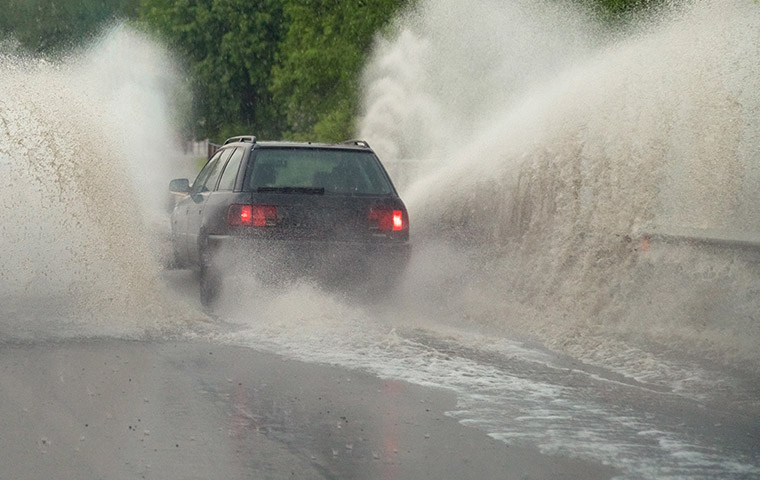Keeping fleets safe should be a top priority for any fleet business, regardless of size or industry. Most of the time, this involves safety training and vehicle safety features, but there are other ways to keep drivers safe that may not be as readily apparent. Many fleets may not immediately think of it, but geographical risk management is one solution that helps keep drivers safe. There are many risks that drivers face on the roads, and it’s essential to be aware of all of these risks. Some of these risks are specific to a driver’s geographical location, such as weather events and natural disasters, and it’s crucial to take these factors into account when measuring a fleet’s risk. We will outline why this is important below.
What Are Fleet Risk Management and Geographical Risk Management?
Fleet risk management involves ensuring that fleets adhere to regulations and practices that reduce risk. Fleet risk management spans all aspects of fleet operations, from driver safety to vehicle maintenance, training, technology, and more. Keeping drivers safe is also a benefit for fleets looking to reduce costs. Accidents are a pricey burden to fleets, who naturally look to avoid them in any way possible. Properly assessing risk is the best way to prevent these accidents.
Geographical risk assessment refers to risks specific to a fleet’s geographical location. This may include natural disasters, weather events, and other similar issues. Taking steps to avoid these problems is an absolute necessity in areas of high risk. We will break down the benefits of fleet risk assessment below.
Reduce Costs
One of the top benefits of any fleet risk management protocol is reducing costs for your fleet. Fleets must meet specific safety standards to comply with FMCSA regulations. If they don’t meet these standards, they can face significant fines, and vehicles can be taken out of service, delaying business and hurting revenue. Therefore, it is crucial to ensure that fleets comply with all safety regulations to avoid these fines and keep operations running as smoothly as possible. Furthermore, vehicle breakdowns also take vehicles out of service while they are in the shop. This is another hindrance that businesses can eradicate with proper fleet risk management.
Insurance Costs
Fleets are always looking for ways to cut down on insurance costs. One of these ways is by conducting a proper fleet risk assessment. Of course, insurance companies want to insure safe drivers over unsafe drivers. When fleets conduct risk assessments and take steps to make their fleets safer, insurance companies see those efforts and often offer insurance discounts. Safety measures for fleets can include features such as:
- Dash cams
- eLogs or other telematics systems
- Lights that automatically adjust
- Back up cameras
For geographical risk assessments, there are other options that we will break down later in this article.
Employee Retention
Employees are more likely to stick around if they feel safe in their workplace. Conducting regular risk assessments and ensuring that they have what they need to stay safe on the road is necessary to make them feel safe behind the wheel. Regular training and rewards for safe behavior can show when a fleet highly values safety, and drivers will appreciate the effort. Employee turnover costs fleets an average of $15,000 per person, and with the trucking shortage ongoing, fleets can’t afford to lose good drivers.
Steps for Geographical Safety
There are many ways to keep fleets safe from geographical hazards. One way is by using predictive analytics. Predictive analytics allow you to set up features like geofences around areas that may be affected by wildfires or storms, so you know if drivers enter areas of danger. Another feature, called route optimization, can help you find an alternative route that avoids dangerous areas and keeps your drivers safe while still getting the job done. Fleet risk assessment tools like Azuga’s SafetyIQ help fleets assess risk specifically regarding geographical issues, not only including weather conditions but also political rallies and other large events that may cause delays or unsafe driving conditions. This tool also provides reports on driver behavior and lets you recreate the scene, providing valuable insights to help you make decisions regarding fleet safety. It is vital to have tools like SafetyIQ at your disposal when completing a geographical risk assessment.
Conclusion
Completing a fleet risk assessment is a crucial step in keeping fleet drivers safe on the road. Fleets will save time, money, and drivers will be happier when they feel safer behind the wheel. Azuga offers a variety of tools that keep drivers safe in all kinds of situations that may arise. Learn more about what Azuga has to offer online.








